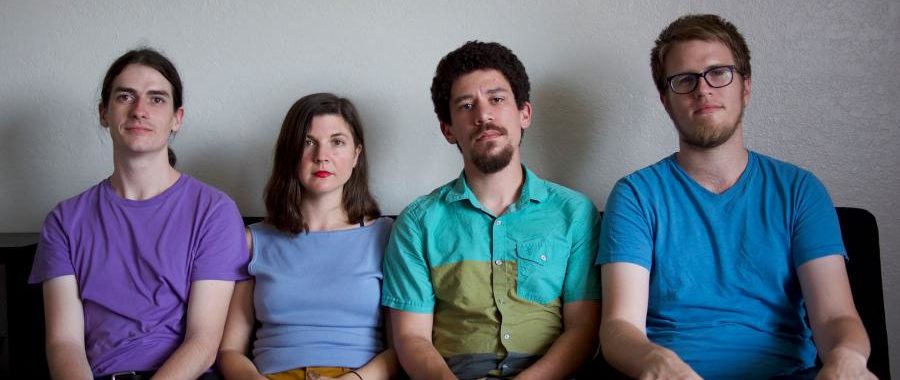
The LA Electroacoustic Ensemble (LAEE) is an electronic chamber music quartet formed in 2018. The group is comprised of composer-performers Marcus Carline, Glen Gray, Zaq Kenefick, and Cristina Lord, who are all graduates from southern California composition programs with varying backgrounds in free improvisation, early music, and jazz. The ensemble was formed to pursue common goals of establishing standards for the composition and performance of electronic chamber music. The ensemble uses laptops, hardware synthesizers, and various electronic tools to explore musical techniques such as signal processing, digital synthesis, and sampling.
Artist Location: Long Beach, CA / Boston, MA
Social Media:
PARTICIPATION
displaced
Displaced is a concert of premieres of new works exploring the technical and socio-relational elements of telematic performance. At the beginning of the pandemic, musicians were forced online for telematic collaboration and performance (music performed live and simultaneously across geographic location via the internet). Due to the inherent delay involved, music that is rhythmically synchronized is difficult, leading many playing more traditional music to deem telematics to be purely academic, or useless for their own practices. However, thanks to the heavily improvisatory nature of our work, we now make extensive use of telematics for rehearsals and performances. Now that rehearsing in person again feels safe and appropriate, our ensemble finds itself reaching for telematic tools again, as one of our members has left Southern California. With just one member “phoning in”, we have discovered multimodal relationships in our rehearsal process, occasionally utilizing our distanced member as soloist, or tech support, or allowing him the option to oscillate between a number of roles. We’ve also explored alternative modes of telematics beyond the more conventional, such as phone calls, using lofi skype audio, and voip services. While our work does interface with musical traditions, due to the electroacoustic sound sources, and highly improvisatory nature of our compositional practice, I have a hard time clearly classifying it as “Music”.
soundpedro 2021 participation: N/A
Proposed work as accepted for soundpedro 2021:
LAEE: The Los Angeles Electroacoustic Ensemble
Performance options:
1. An improv set (variable duration), using a combination of acoustic instruments, laptops, and modular synths.
2. A set of live performances and/or video adaptations.
Virtual Breakout During the Outbreak June 6th Livestream
Virtual BreakOut During the OutBreak Videos [VBODOBV] III
Poison Tree

Our original proposal did not translate to video, but this is part of a different project that we present instead, which is related to Covid-19. The idea behind this piece originates from the poem by William Blake, “Poison Tree,” which describes how neglect of something relatively harmless (in the case of the poem, anger towards someone) can lead into the manifestation of something truly treacherous (a poisonous tree that kills whoever eats its fruit). This relates to the current crisis because it has shown how something dangerous can start out small, but build into a global pandemic.
Proposed work as accepted for soundpedro 2020:
Shadows and Colors
As a laptop quartet, we often are forcing electronic music into a chamber music vernacular, but the possibilities of electronic media exists in so many other realms. As such, we want to experiment with the liminal space between chamber music and installation by exploring what happens when an installation turns into a chamber music piece and vice versa.
Projected lights will be featured as a central aspect of the installation. Processed feedback will explore the time loop that occurs when a camera reinterprets the projected light and processes it into data, which then re-affects the lights. In addition, the data generated through the visual feedback network will be interpreted sonically through the laptop ensemble. These lights will be set to trigger sonic events by movement in front of the light fixtures, which will be done both by the ensemble members and people interacting with the installation.
The ensemble’s participation with these interactive lights and sonic events will be dictated by timings set forth in John Cage’s graphic score for Fontana Mix (1958). As an ensemble, we have previously performed with this work in collaboration with dancers. For Sound Pedro, we are interested in exploring how this piece interacts with an installation environment and light cues.
